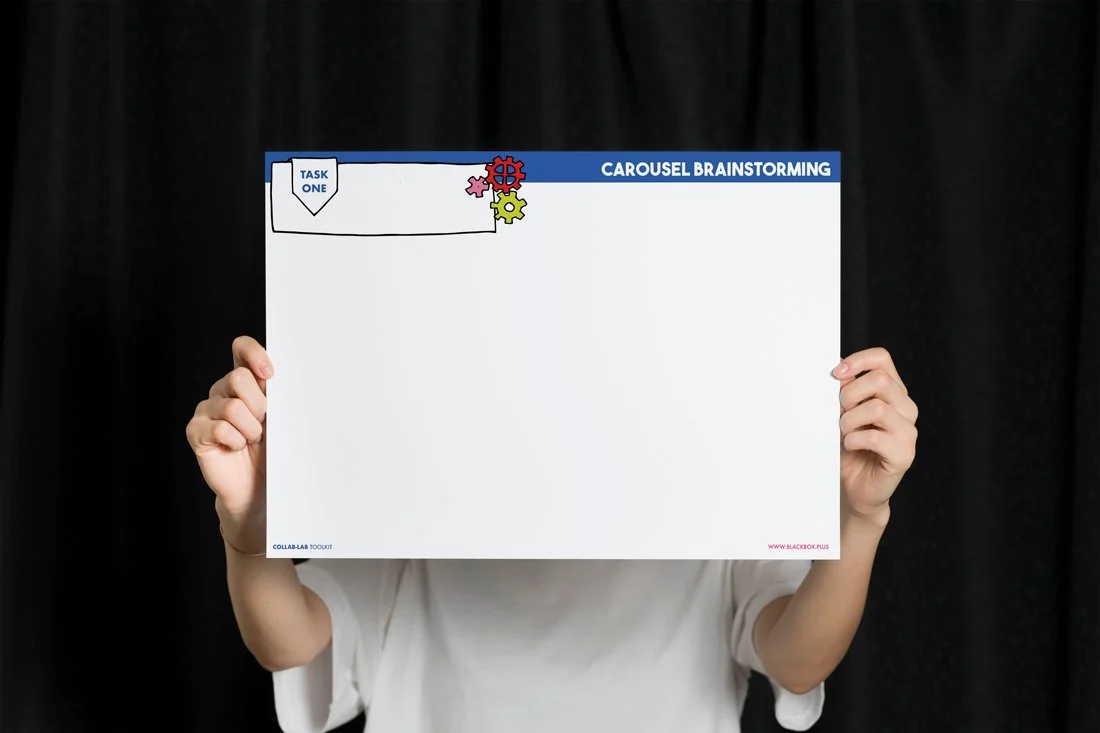- carousel brainstorm -
- carousel brainstorm -
The Carousel Brainstorming routine is a collaborative learning activity that encourages students to engage in movement, discussion, and reflection while rotating through a series of stations. Each station presents a different question, task, or topic for exploration, promoting active participation and idea-sharing among groups.
This routine is ideal for introducing new topics, reviewing prior knowledge, or consolidating learning. The structured rotation ensures every group contributes to multiple tasks, creating a comprehensive visual representation of the class's ideas that can be displayed or revisited later.
INSTRUCTIONS
Prepare the Routine Framework
Print Out the Materials
Print out the Carousel Brainstorming templates, available in six different colours. These colours help distinguish tasks and allow up to six groups to work simultaneously. A3 paper is recommended for ample space, but A4 can be used if A3 printing is unavailable.
Set Up the Stations
Arrange the classroom with six distinct stations, one for each task or question. Place a coloured template at each station, ensuring it corresponds to the task. Write the task clearly in the designated box on each template.
Introduce the Activity
Explain the purpose of the Carousel Brainstorming routine to your students. Highlight that they will rotate through each station, collaborating to brainstorm ideas, answer questions, or discuss topics. Clarify that their contributions will build on those left by previous groups.
Deliver the Activity
Divide Students into Groups
Organise the class into up to six groups, ensuring each group has a mix of abilities and perspectives. Assign each group to start at a specific station.
Set a Time Limit
Allocate a time limit for each station (e.g., 5–10 minutes). Inform students that they should discuss and write their ideas collaboratively before moving to the next station.
Monitor and Facilitate
As students work, circulate around the room to observe progress, ask probing questions, and keep groups focused. Encourage students to expand on or respond to ideas already written by prior groups.
Signal Rotation
Once the time is up, signal for groups to rotate to the next station. Continue this process until all groups have visited each station.
Wrap-Up and Reflect
Review the Work
Once rotations are complete, bring the class together to review the completed templates. Discuss the contributions, highlighting key ideas, patterns, or interesting points.
Display or Store the Outputs
Display the completed templates on the walls for reference, or compile them into a shared resource for future use.
